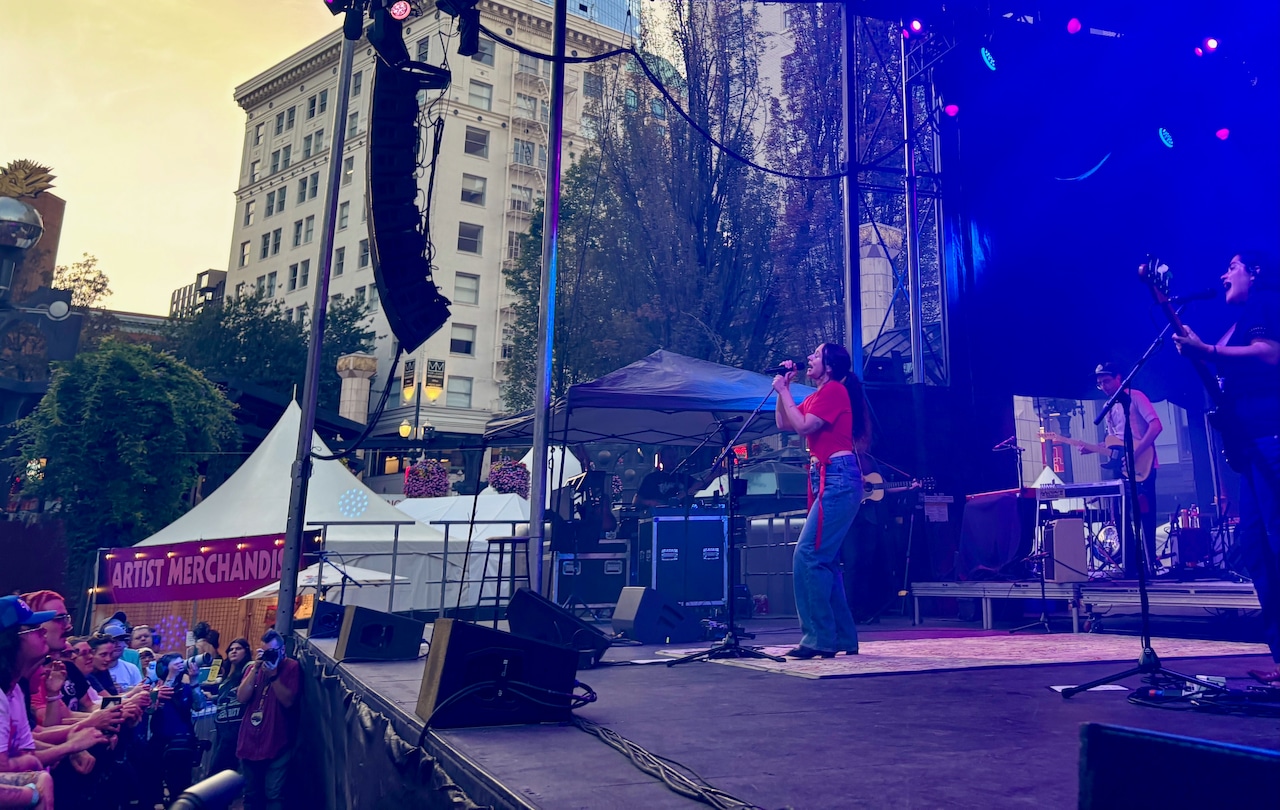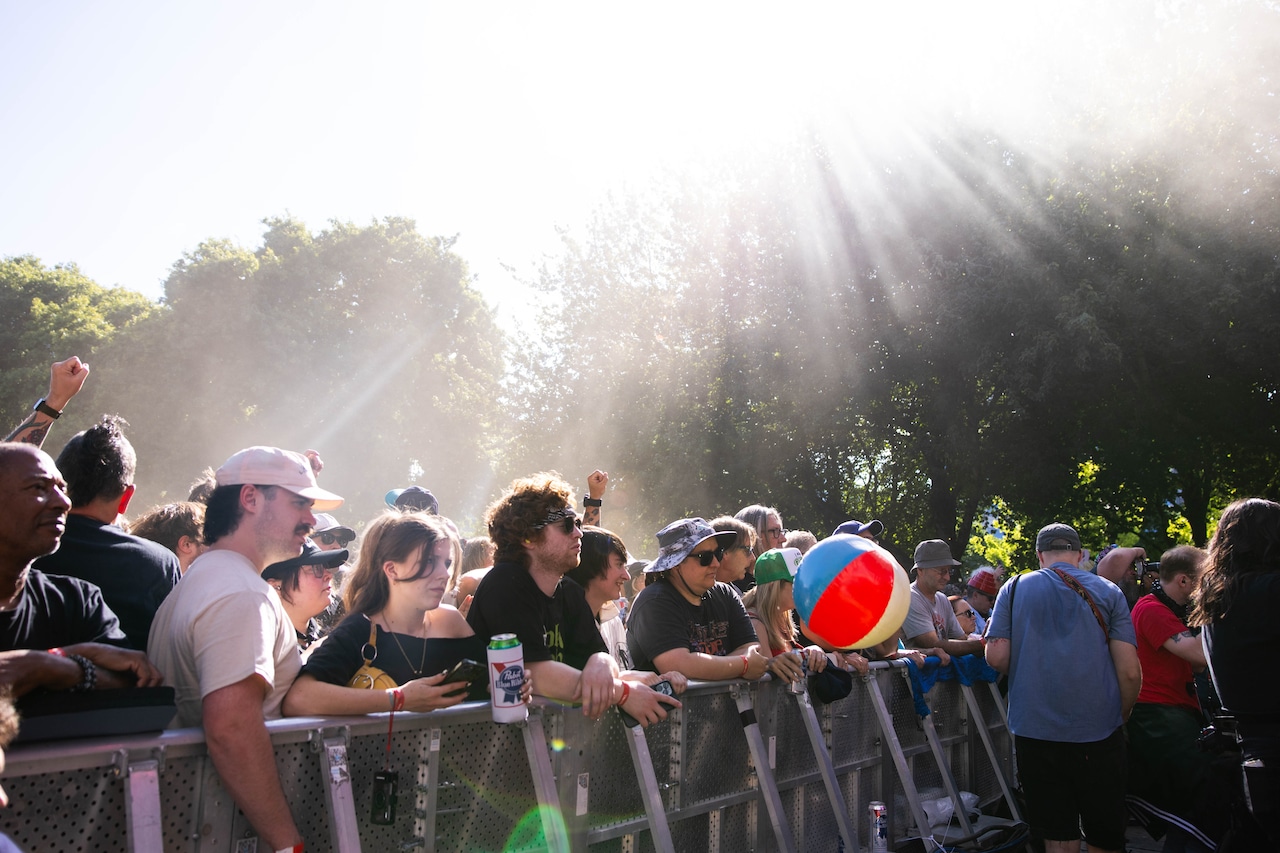There are some things the internet can’t give you: The feeling of being tucked in next to strangers while the sky turns purple, screaming the lyrics to Tom Petty’s “The Waiting,” while a tribute band plays along from up on stage.
Sure, you could watch a YouTube video of Tom Petty himself singing the song, but you wouldn’t feel the sweat – yours, that of the man next to you, dancing like crazy, in a mesh shirt.
You wouldn’t get that jolt when a whole crowd of people sing, “Oh baby, don’t it feel like heaven right now? Don’t it feel like something from a dream?” and you are one of them, totally insignificant and also crucial to the whole operation.
Also: You wouldn’t step on a nail that goes up through your Croc (why did you wear Crocs?). You wouldn’t have to drive anywhere. You wouldn’t get sick after, probably a direct result of that sweat and other fluids flung into the air by joyful, lubricated people.
This is the bargain of the real world. There will be beauty. There will be pain. The experience will be uncomfortable. But you will be in your body, alive, in this moment.
Earlier this year, I wrote about the struggling summer music festival scene in the Portland area.
We are rife with festivals but many of them are having a hard time making ends meet, let alone being profitable. Costs are skyrocketing for everything from stage lights to security to beer, and as ticket prices go up, going to see live music outside in the summer is becoming expensive for fans, sometimes prohibitively so.
(Though, just a heads up, tickets are still available for PDX Live’s upcoming shows and they start at just over $50.)
This summer, I decided to get out and see what these festivals look like on the ground. I started off with an afternoon at the Waterfront Blues Festival. I drove to Canby for the first night of Harefest. I revisited my early 20s at Project Pabst. I went to the woods for Pickathon and then the middle of the city for Waxahatchee at PDX Live.
What I found were hordes of people, hungry for a feeling.
While none of the festivals I went to this summer were sold out, they were full. At Harefest, for example, attendance was up 5% year over year, with roughly 10,000 unique attendees across the three days, according to Jason Fellman, the festival’s organizer.
“The festival was profitable, although profit was down a bit from last year,” Fellman said, “primarily due to significantly higher expenses.”
Before this summer, Fellman was the only person I spoke to who said their festival was making money. As the season draws to a close, no other festival responded to my question about whether they were able to cover costs this year.
On the surface, all of these festivals are separate projects.
The Waterfront Blues Festival showcases blues music and is the city’s nominal Fourth of July party, complete with our only fireworks show.
Pickathon is an experiment in community and sustainability; Harefest is about reliving your youth, which in some sense is what Project Pabst is about, too, though maybe a different youth.
PDX Live is about being in the center of Oregon’s biggest city and watching a MAX train pass during a guitar solo.

But under the surface, they are all about the same thing: Connecting to each other. The bump of a stranger, the smile when a friend sees you in a crowd, your face turned up towards the musician on stage.
We are alive in a scary and confusing time. In some ways, for some people, individual lives have never been better. But there’s a deep, black ooze coming up from the center of the Earth, picking us off one by one.
Or maybe not, but it sure feels that way.
Art – creating it, sharing it, experiencing it – is the bright light pushing back the ooze. And when we are together, in a real, physical place, feeling the wind on our skin, we are cells that make up something bigger, part of a whirring organism that lives because of us and yet doesn’t know we exist.
You can’t, or you shouldn’t, intellectualize singing Tom Petty lyrics at the top of your lungs until no sound is coming out when you yell. It doesn’t have to be meaningful beyond the act of being there.
But you have to be there.
A.I. cannot experience it for you. A.I. can’t tell you what it is or what it means. The whole magic of human life is too ephemeral to be described and summarized by a robot.
In person, you smell porta-potties and bacon-wrapped hot dogs, and you see the humanity in everyone because that’s how it is with us as a species. Up close, we can’t help but identify with each other.
So much of that hulking, creeping ooze is about using an algorithm to separate us and subvert our human need to connect, to see faces and feel reactions, with social media and shocking news clips.
We get that surface buzz – a like! a hate! – without the deeper, complex feelings or the support and love of a person made of blood and bones beside you.
It’s like a Diet Coke for dessert on your birthday instead of a slice of chocolate cake. Or worse. The scent of Diet Coke, squirted into your nose by a Diet Coke facsimile machine.
What if live music becomes too expensive or we get too comfortable in our houses with our screens, and summer festivals and then live art in general, slowly fade into memory?
Something will replace them, but it might be something frictionless, a Tom Petty concert experience on your virtual reality headset, presented by Diet Pepsi.
We will get the most surface level of the need met while the rest of us atrophies and we don’t remember what it feels like to riff with a friend under the slowly darkening sky about anything, what it feels like to sing songs about death with strangers, what it feels like to walk over the Burnside Bridge late at night with someone you’ve known since fourth grade.
Maybe it’s dramatic. Or naive. But that’s what I decided, as my phone died and I walked down 6th Avenue, looking for my bus stop after swaying to Waxahatchee with a coworker and his young daughter attending her first grown-up concert: What work can we do to fix this broken world? We can go outside and be together.

– Lizzy Acker covers life and culture and writes the advice column Why Tho? Reach her at 503-221-8052 or [email protected].
If you purchase a product or register for an account through a link on our site, we may receive compensation. By using this site, you consent to our User Agreement and agree that your clicks, interactions, and personal information may be collected, recorded, and/or stored by us and social media and other third-party partners in accordance with our Privacy Policy.
